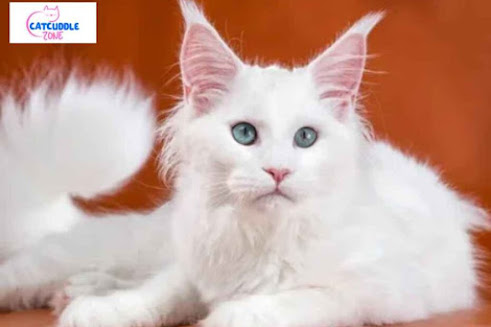Cat Trilling Explained: What Your Feline Is Telling You
If you’ve ever heard your cat make a short, sweet, warbling sound that isn’t quite a meow and definitely isn’t a purr, then congratulations—you’ve just been trilled at. 😺
Cat trilling is one of the most charming and curious vocalizations in the feline communication toolkit. But what does it actually mean? Why do cats trill, and how should you respond when they do it?
In this post, we’ll explore the adorable mystery of cat trilling—what it is, why it happens, and what your cat might be trying to tell you with every chirpy little trill.
🐾 What Is Cat Trilling?
Trilling is a short, high-pitched sound that cats make by keeping their mouth closed and pushing air through their vocal cords. It’s usually described as a mix between a chirp and a meow—soft, rolled, and musical.
Unlike yowling or hissing, which usually indicate stress or aggression, trilling is almost always a friendly, positive sound. It’s your cat’s way of engaging with you or other cats in a gentle, affectionate manner.
Think of it as the feline equivalent of saying:
-
“Hey there!”
-
“Follow me!”
-
“I’m happy to see you!”
It’s social, sweet, and incredibly expressive.
🧠 Why Do Cats Trill?
Cats trill for a variety of reasons, all of which depend on context, tone, and your cat’s personality. Let’s break down the most common meanings behind a trill:
1. To Greet You
Trilling is often used as a feline “hello.” If your cat sees you after a few hours—or even just when you walk into the room—you might be greeted with a quick trill. It’s their way of acknowledging you and expressing happiness that you’re around.
2. To Get Your Attention
Much like how some cats meow to demand food or affection, trilling can be a gentle way to grab your attention. They might be asking you to follow them to their food bowl, a sunny spot, or even just to hang out.
3. To Communicate with Other Cats
In multi-cat households, trilling is common among cats that get along. It’s part of social bonding and often seen between a mother and her kittens. A mama cat may trill to call her kittens to her side or guide them to a safe place.
4. To Show Excitement
Some cats trill when they’re excited or curious. If your cat hears the sound of a treat bag or sees a bird out the window, a trill may escape as part of their heightened arousal. It’s often paired with a tail twitch or perked-up ears.
5. As a Learned Behavior
Cats are smart—and if they learn that trilling gets your attention (and maybe a treat or two), they may start doing it more often. Some cats develop a habit of trilling simply because they know it works.
🐱 Is Trilling the Same as Chirping or Chattering?
Great question! Trilling is often confused with chirping and chattering, but they’re slightly different:
-
Trilling: A soft, rolling, friendly greeting sound.
-
Chirping: A quick, bird-like peep, often used when hunting or observing prey (like birds outside the window).
-
Chattering: A fast, jaw-quivering sound—often seen when a cat is excited or frustrated while watching something they can’t reach.
All three sounds are adorable—and uniquely feline—but trilling is the most affectionate and social of the bunch.
🩺 Is Trilling Ever a Sign of a Problem?
In most cases, trilling is completely normal and healthy. It’s a sign your cat is content, social, and confident in their environment. However, if your cat starts trilling excessively or suddenly trills much more (or less) than usual, it’s worth noting:
-
Is your cat also showing signs of distress?
-
Are they eating, grooming, and using the litter box normally?
-
Have there been changes in the home (new pets, moving, loud noises)?
If your cat’s vocal patterns change drastically without an obvious reason, a check-up with your vet can rule out any medical issues.
💬 How Should You Respond When Your Cat Trills?
The short answer? Trill back! 😹
Okay, maybe not literally—but definitely acknowledge the communication. Here’s how to respond positively:
✅ 1. Talk Back Softly
Say something in a gentle, happy tone. Your cat will pick up on your voice and body language.
✅ 2. Follow Them (If They Walk Away)
Many cats trill while walking, trying to lead you somewhere—often to their food dish, a window, or their favorite toy.
✅ 3. Offer Affection
If your cat trills while rubbing against you or looking up expectantly, that’s your cue for some head scratches or cuddles.
✅ 4. Respect Their Boundaries
Some cats trill to communicate, but they may not want to be picked up or cuddled right away. Pay attention to body language.
🧡 The Trill as a Sign of Trust
The fact that your cat trills at you is a big deal. It means:
-
They see you as part of their social group
-
They feel safe and relaxed in your presence
-
They want to interact in a positive way
In a world where cats are often misunderstood as cold or aloof, trilling is proof that they’re capable of deep social connection—and they’re letting you in on it.
🐾 Final Thoughts
Cat trilling is one of the sweetest, most delightful sounds in the feline world. It’s a versatile form of communication that signals trust, happiness, and social bonding. When your cat trills at you, it’s more than just a cute noise—it’s their way of saying “I like you,” “I’m curious,” or “Come with me.”
So the next time you hear that soft, rolling chirrup, take a moment to appreciate it. Your cat just paid you a compliment in their own special language. 🐱🎶
Want more cat behavior tips, cuddly moments, and feline fun?
🧶 Visit our blog: https://catcuddlezone.com




Comments
Post a Comment